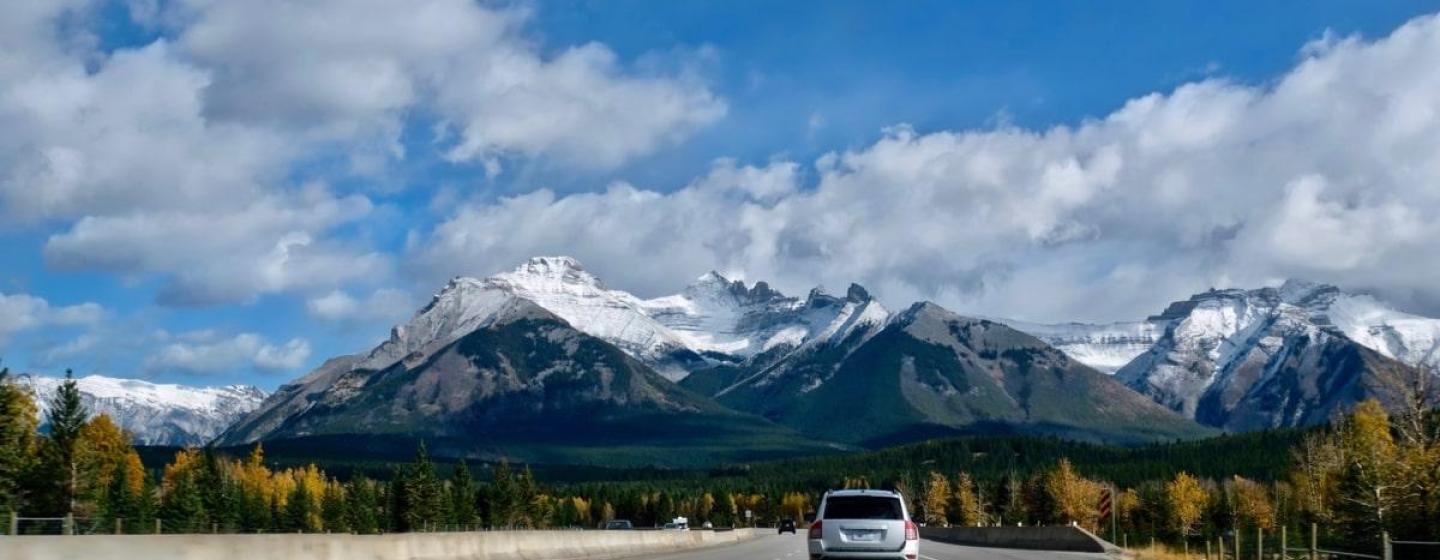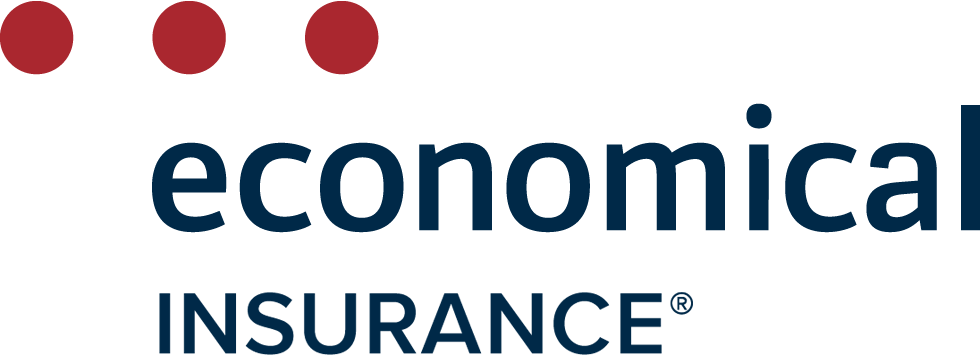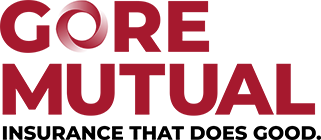
Cheap Lethbridge Car Insurance Quotes
Compare 50+ insurance quotes in a single search
Jump straight to...
- How does Lethbridge auto insurance work?
- How to get the cheapest Lethbridge car insurance quotes
- Mandatory & optional car insurance coverage in Lethbridge
- How much does car insurance in Lethbridge cost?
- Factors that influence your Lethbridge auto insurance premium
- What can I do to get cheaper car insurance in Lethbridge?
- Frequently asked questions about Lethbridge auto insurance
How does Lethbridge auto insurance work?
You must have insurance to drive a car legally in Lethbridge, AB.
Private companies provide insurance to drivers in Alberta, which is different from neighbouring B.C., Saskatchewan, and Manitoba, where a government corporation is the sole insurance provider.
Alberta's market may be private, but the government does intervene when insurers set prices. The Alberta Automobile Insurance Rate Board (AIRB) controls the rating criteria private insurers can use to determine how much to charge for coverage.
Insurance companies must apply to AIRB and justify why they should be allowed to change their rates.
They also must follow the Grid system, which is unique to Alberta. The Grid lays out the maximum a driver can be charged for a standard policy. Companies are free to set whatever price they want for optional coverages.
The Grid is typically used to determine prices for inexperienced drivers or those with certain risk factors.
Most drivers pay less than the rates posted on the Grid.
As of 2022, Alberta adopted no-fault Direct Compensation for Property Damage (DCPD). Under this system, a driver's insurance company will pay for repairs to their vehicle when a collision involving the car is not their fault.
Not-at-fault drivers can also sue for damages not covered by the at-fault driver's third-party liability insurance. For example, plaintiffs in Alberta are allowed to wage lawsuits for pain and suffering and future economic losses.
How to get the cheapest Lethbridge car insurance quotes
Compare multiple auto insurance quotes in the time it takes to get just one.
Enter Postal Code
Enter your postal code

Enter Driver Details
Tell us a little bit about your vehicle, driving & car insurance history.

Compare Your Quotes
Compare your car insurance quotes from more than 50 top insurance companies.

Pick Your Policy
Pick the insurance policy that's right for you to connect directly with the insurance professional of your choice.
We've got hundreds of 5 star reviews
2,247 reviews on TrustPilot. See some of the reviews here.
Fran
Curtis
Robert Clarkson
Vincenzina Perri
Keith
Dev
Georgia
Shirley Munro
Hoang Tran
Alnoor
Michael Benninger
Gene
D on
Robert
Remonia Thompson
Rich
Luis
Mandatory & optional car insurance coverage in Lethbridge
| Insurance type | Mandatory coverage | Optional coverage |
|---|---|---|
| Accident benefits | Sometimes called no-fault benefits or Section B benefits, this covers costs associated with income replacement up to 80% of weekly earnings (max. $400 per week) for up to two years; medical treatment up to $50,000 per person per accident; funeral expenses of up to $5,000 per person; death benefits of $10,000 for head of household plus $2,000 to each dependent, $15,000 for first survivor and $4,000 for each additional survivor; $10,000 for the death of the spouse of the head of the household. | |
| Direct Compensation for Property Damage (DCPD) | This coverage, introduced in Alberta at the beginning of 2022, means that the driver’s own insurance company compensates the driver for damages following a collision for which the driver is not at fault. Alberta’s previous system, which was tort-based, required that drivers who were not at-fault to seek compensation from the other driver’s insurance company. This approach tends to be time-consuming and costly. | |
| Third-party Liability | Also known as third-party liability, this covers costs associated with lawsuits pertaining to injury, deaths, or damage to property of a third party in which you are responsible. The mandatory minimum policy limit is $200,000. According to AIRB, over 98% of Alberta’s drivers opt for additional liability coverage. | The most common coverage limits are $500,000, $1 million and $2 million. |
| Collision coverage | Optional | Covers car replacement or repair costs if your car is damaged in a collision and the policyholder is at fault. |
| Specified perils | Optional | Covers damage from perils specifically named in the Alberta auto insurance policy, such as attempted theft, damage in transport, earthquake, explosions, fire, lightning, riots or windstorm. |
| All-perils | Optional | Covers many perils, broadly, has similarities to collision and comprehensive coverage. |
| Accident Rating Waiver (SEF 39) | Optional | Prevents an Alberta car insurance premium from going up following a collision in which the policyholder is at fault. |
| Family Protection (SEF 44) | Optional | Protects drivers in a collision with an underinsured or uninsured driver. Will cover the difference if costs exceed the other driver’s insurance benefit. |
| Legal Liability for Damage to Non-Owned Automobiles (SEF 27) | Optional | Extends physical damage coverage to include rental cars. Drivers with this endorsement on their policies don’t need to purchase additional coverage when they rent a car. |
| Limited Glass (SEF 13D) | Optional | Reduces the amount of coverage for glass damage in exchange for a lower premium. |
| Limited Waiver of Depreciation (SEF 43R) | Optional | Waives depreciation on the repair or replacement of a new vehicle following damage from a covered peril. Is usually applicable to vehicles that are less than two years old. |
| Loss of Use (SEF 20) | Optional | Compensation for transportation costs up to a limit when a vehicle is damaged due to a covered peril. |
| Towing and Emergency Services (SEF 35) | Optional | Coverage for towing and other emergency service costs when a vehicle is disabled, and the driver doesn’t have roadside assistance. |
How much does car insurance in Lethbridge cost?
Car insurance in Lethbridge costs, on average, $1,780 per year. This is 11% cheaper than the provincial average of $1,991 per year.
The Lethbridge average was calculated in late 2021 and is based on a 35-year-old male driver with a claim and conviction-free insurance record who drives a 2018 Honda Civic. Your mileage may vary if you're significantly younger or older.
Roughly 75% of cities had higher average premiums than Lethbridge's, according to the annual Insuramap study, which calculates the average premium for 65 cities and towns across Alberta.
Here's how Lethbridge compares to other southern Alberta cities:
- Medicine Hat: $1,722 (3% cheaper than Lethbridge)
- Banff: $1,849(4% higher than Lethbridge)
And here's how it compared with two of the province's most densely populated cities:
- Edmonton: $2,124 (20% higher than Lethbridge)
- Calgary: $2,230 (25% higher than Lethbridge)
Age
Drivers in their teens and early twenties pay some of the highest insurance premiums. They still need to build a track record with an insurance company.
Conversely, drivers in their fifties and sixties pay some of the lowest premiums.
Your car
Cars under three years old, especially ones with upgraded trim, cost more to insure, as replacing or repairing them also costs more.
However, another factor that impacts premiums is how susceptible a make and model is to theft. Some average cars are targets for thieves, too. They cost more than average to insure, even though they don't have flashy accessories.
Where you live
Insurance companies base their prices on how much loss customers report within a geographical area.
Alberta's auto insurance regulator has divided the province into territories on which insurers base their premium calculations.
This is where your address comes into play. If many people in your territory file claims, your own premium could also increase, regardless of your history (although by less than the people who did report a loss).
Your driving record
Your driving record and your insurance history have a significant impact on your premium. Convictions for driving under the influence, speeding, and driving without a licence will lead to your insurer raising your premium when your policy renews.
Your insurance history
Having a history of at-fault claims will lead to a higher-than-normal premium. Other things that can negatively impact your premium are failing to pay your premium on time and driving for a rideshare app without first notifying your insurance provider.
The insurance coverage you select
Buying optional insurance coverage, like one that reimburses you for repairs after you cause an accident, enhances your coverage but will raise your premium.
Your policy’s deductibles
For some types of coverage, insurance companies expect you to put a certain amount towards the claim. This is what's known as a deductible. It’s meant to deter people from filing claims and helps reduce the insurer's expenses. When you offer to pay more than expected, your insurance company will see it as a sign that you're less of a risk to insure and lower your premium in return.
Gender and marital status
Insurance companies in Alberta are allowed to take your gender and marital status into consideration. Single men generally pay higher premiums than women (they're more likely to be involved in a collision, according to actuarial data). Married couples are seen as less risky to insure (they exhibit safer driving habits and may have multiple lines of business with the same insurance company).
The insurance company you choose
Insurance companies must have enough to meet their obligations to policyholders in the present and future. They will increase premiums for some customers to ensure that claim settlements don't eat away at their savings.
What can I do to get cheaper car insurance in Lethbridge?
- Shop around: Lethbridge drivers saved an average of $903* by using InsuranceHotline.com. Before your insurance renews this year, shop around to see if another insurance company can offer you a lower rate.
- Increase your deductible: It’s possible to lower your premium by up to 10% by increasing a deductible.
- Pay your premiums upfront: Pay your annual premium in one lump sum instead of paying monthly. Your insurer will pass on savings they incur from reduced administrative costs.
- Bundle your home and auto insurance: Save up to 15% by bundling your home and auto insurance with your insurance provider.
- Insure multiple cars : Your insurance company will offer you a discount for the extra business if you have multiple vehicles in your household.
- Trim your policy: Review your policy annually. You may not need collision and comprehensive insurance once your car is more than three years old.
- Apply for discounts: Some insurers offer discounts to members of local organizations like the Alberta Motor Association, AUPE members, or university alumni. Ask your provider about their group discounts and see if you qualify.
- Don't procrastinate on winter tires: When the temperatures drop, let your insurance company know if you've installed winter tires on your car for a 5% discount. All-season tires don't qualify for the discount.
- Get schooled: If you’re new to driving, take a driver’s ed course, also known in Alberta as a Class 5 Driver Education Program. Once you’ve completed the course, remember to get a copy of the Notice of Driver Education Course Completion form to ensure you get a discount applied to your policy.
- Try telematics: Alberta drivers who exhibit good driving behaviours can reduce their premium by up to 25%. To get the discount, you need to give your insurer permission to monitor their driving habits through a device that plugs into their car's onboard computer.
Compare car insurance quotes in Lethbridge for lower rates
For busy families, every dollar, and every minute counts. While there are many ways to save on your Lethbridge auto insurance premiums, there is no more effective or faster way than by shopping around and comparing quotes.
That's why families have been trusting InsuranceHotline.com to find Alberta's lowest car insurance rates since 1994. Alberta drivers can save thousands annually by comparing car insurance quotes on InsuranceHotline.com. All it takes is a few minutes to get your quotes from our network of more than 50 trusted Canadian insurance providers.
Frequently asked questions about Lethbridge auto insurance
How can I find the cheapest Lethbridge car insurance?
The Alberta Automobile Insurance Rate Board and the Financial Consumer Agency of Canada recommend getting quotes from multiple insurance companies. Luckily, InsuranceHotline.com will bring you quotes from 50+ insurance providers in the time it takes to apply for one.
Who has the best auto insurance in Lethbridge?
The answer is usually different for everyone. Insurance companies base your premium on how much risk you present and whether they want to take that on. Generally, your best insurance company is the one that offers you the lowest rate; it's a sign they want your business.
Can I get car insurance in Lethbridge as a newcomer?
New Canadians can get car insurance in Red Deer. You'll need a valid driver's license, for starters. If you're licensed in your home country, you have a 90-day grace period from the time you arrive to change over your license – so you have a bit of time.
The province judges each country’s licensing system differently, so check with the Government of Alberta to see where your home country stands.
After you've received a valid licence, you can get car insurance. Some Canadian insurance companies will count your driving experience from your home country. Unfortunately, not all will. You may need to build your insurance history from square one. One way to prevent this from happening is to have a record of your insurance to show Canadian providers.











